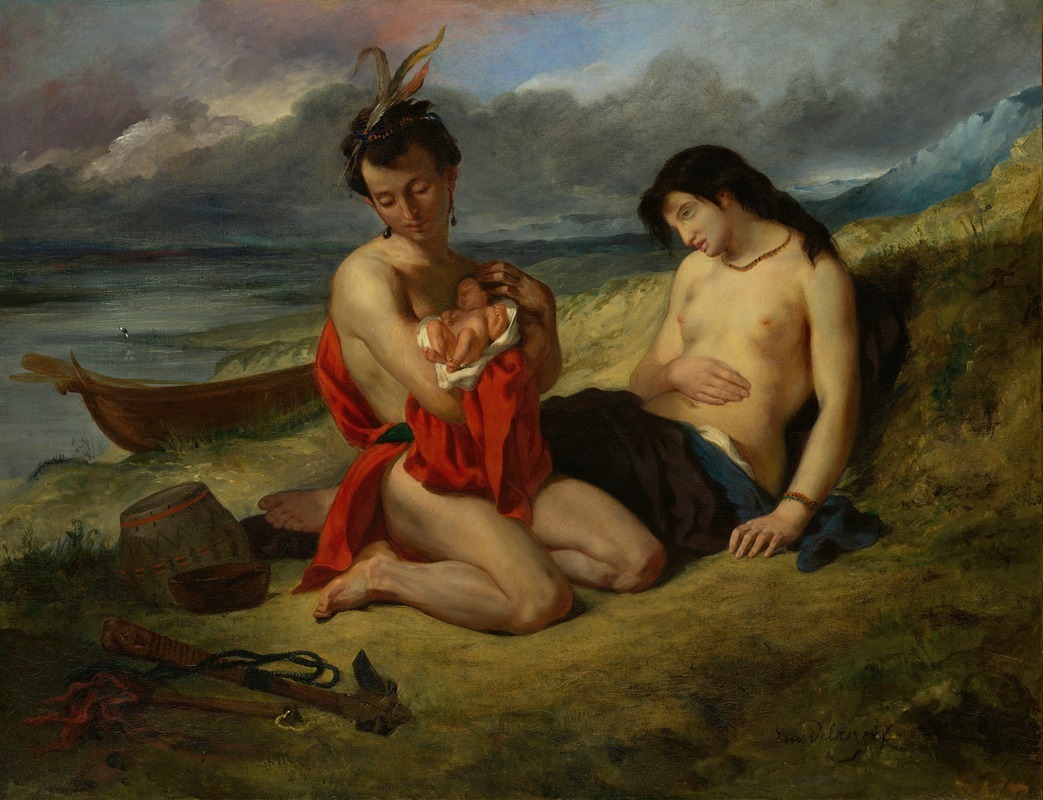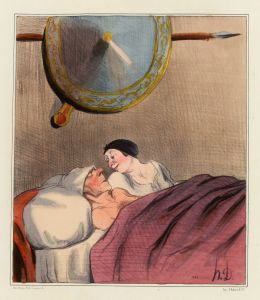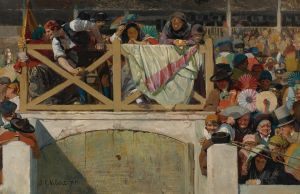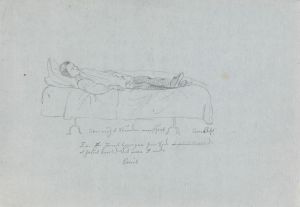
The Natchez
A hand-painted replica of Eugène Delacroix’s masterpiece The Natchez, meticulously crafted by professional artists to capture the true essence of the original. Each piece is created with museum-quality canvas and rare mineral pigments, carefully painted by experienced artists with delicate brushstrokes and rich, layered colors to perfectly recreate the texture of the original artwork. Unlike machine-printed reproductions, this hand-painted version brings the painting to life, infused with the artist’s emotions and skill in every stroke. Whether for personal collection or home decoration, it instantly elevates the artistic atmosphere of any space.
Eugène Delacroix, a leading figure of the French Romantic movement, painted "The Natchez" in 1835. This artwork is a significant example of Delacroix's fascination with exotic and historical themes, which he often explored throughout his career. The painting is currently housed in the Metropolitan Museum of Art in New York City.
"The Natchez" depicts a poignant scene inspired by the novel "Atala" by François-René de Chateaubriand, which was published in 1801. Chateaubriand's novel tells the tragic love story of two Native American characters, Chactas and Atala, set against the backdrop of the Natchez tribe in the Mississippi region. Delacroix's painting captures a moment of tenderness and despair, as it portrays a Native American couple with their infant child, seeking refuge on the banks of the Mississippi River. The scene is imbued with a sense of melancholy and drama, characteristic of the Romantic style.
Delacroix's use of color and light in "The Natchez" is notable for its emotional intensity. The artist employs a rich palette to convey the lushness of the natural surroundings and the emotional depth of the figures. The composition is carefully balanced, with the figures positioned in the foreground, drawing the viewer's attention to their plight. The background features a vast, open landscape, emphasizing the isolation and vulnerability of the family.
The painting reflects Delacroix's interest in themes of love, loss, and the noble savage, which were prevalent in Romantic literature and art. His portrayal of the Native American couple is both idealized and empathetic, capturing the Romantic fascination with cultures perceived as distant and untouched by modern civilization. Delacroix's work often sought to evoke strong emotions and provoke contemplation, and "The Natchez" is no exception.
Delacroix's technique in "The Natchez" demonstrates his mastery of brushwork and his ability to convey movement and emotion. The fluidity of his brushstrokes and the dynamic composition create a sense of immediacy and drama. This approach was influential in the development of later art movements, including Impressionism, as artists sought to capture the essence of a moment through color and light.
"The Natchez" is an important work within Delacroix's oeuvre, showcasing his ability to blend historical and literary inspiration with his unique artistic vision. The painting remains a testament to Delacroix's skill as a storyteller and his capacity to evoke deep emotional responses through his art. As a piece housed in a major museum, it continues to be studied and appreciated for its artistic and historical significance.


















